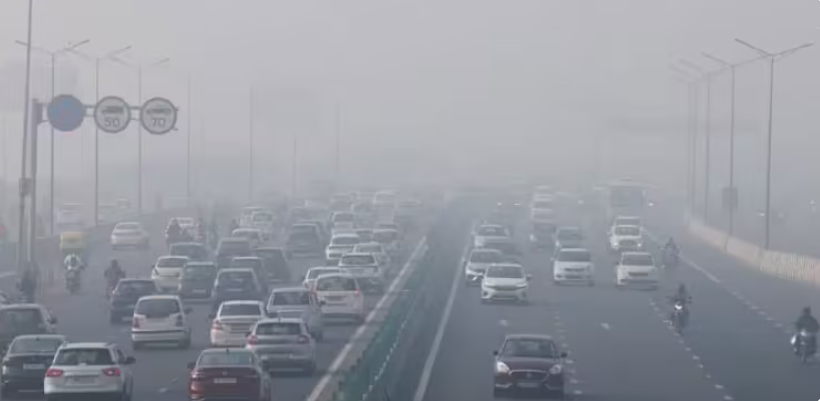Pakistan Met Office Warns of Rising Smog Levels from November to December

Meta Description:
The Pakistan Meteorological Department (PMD) has warned that smog levels are expected to rise across major cities from November to December due to dry weather, industrial pollution, and vehicular emissions, posing serious health and visibility risks.
Introduction
The Pakistan Meteorological Department (PMD) has issued a cautionary advisory regarding a significant rise in smog levels across several parts of the country between November and December. The department said that dry weather, calm winds, and increasing air pollution are likely to create thick layers of smog that will engulf many urban and industrial regions.
According to the Met Office, the worsening air quality will pose serious risks to public health, especially for children, the elderly, and people suffering from respiratory diseases such as asthma and bronchitis.
Understanding the Smog Phenomenon
What Is Smog?
Smog is a mixture of smoke and fog, caused when pollutants such as carbon monoxide, nitrogen oxides, sulfur dioxide, and particulate matter combine with moisture and cold air. It typically forms when temperature inversions trap pollutants close to the ground, preventing their dispersion into the atmosphere.
In Pakistan, smog has become a recurring winter-time crisis, particularly in Punjab’s industrial and densely populated areas, where emissions from vehicles, factories, and crop residue burning combine to form a thick, toxic haze.
Met Office Forecast: A Looming Environmental Concern
The PMD’s latest advisory indicates that smog levels will rise sharply across multiple regions of the country during November and December 2025.
“Dry weather, weak wind activity, and rising air pollution will contribute to higher smog concentration across Punjab and adjoining regions,” the Met Office said in its bulletin.
High-Risk Regions Identified
The areas most likely to experience dense smog formation include:
- Lahore
- Faisalabad
- Sheikhupura
- Gujranwala
- Kasur
- Nankana Sahib
- Multan
- Bahawalpur
- Rahim Yar Khan
- Bahawalnagar
- Khanpur
These districts, located in eastern and southern Punjab, are known for high vehicular traffic, industrial zones, and seasonal crop residue burning — all contributing factors to worsening air pollution.
Why Smog Intensifies in Winter
The onset of winter creates ideal conditions for smog formation. Lower temperatures, higher humidity, and calm wind patterns prevent pollutants from dispersing, allowing toxic particles to accumulate in the lower atmosphere.
When combined with:
- Industrial emissions
- Vehicular exhaust
- Burning of agricultural waste
- Construction dust
the result is a persistent layer of thick smog, often reducing visibility to just a few meters and severely degrading air quality.
“Smog is essentially a human-made problem,” an environmental expert at Punjab University noted. “It’s the outcome of uncontrolled emissions, outdated vehicles, and poor waste management.”
Health Impacts: A Public Health Emergency in the Making
Respiratory and Cardiovascular Diseases
Medical experts warn that prolonged exposure to smog can trigger a surge in respiratory illnesses, particularly asthma, bronchitis, and chronic obstructive pulmonary disease (COPD). Fine particulate matter (PM2.5) penetrates deep into the lungs and bloodstream, causing inflammation and reduced oxygen supply.
“We expect an increase in hospital admissions for respiratory and cardiac problems during the smog season,” said Dr. Farah Malik, a pulmonologist at Lahore’s Services Hospital.
Vulnerable Groups at Greater Risk
The most vulnerable populations include:
- Children, whose lungs are still developing
- Elderly individuals with weakened immunity
- Patients with asthma, allergies, or heart disease
In some areas, health authorities may issue advisories recommending indoor stays during morning and evening hours, when smog concentration is highest.
Environmental and Economic Consequences
Impact on Agriculture
Ironically, the same agricultural sector that contributes to smog through crop residue burning also suffers from its effects. Persistent smog reduces sunlight penetration, slowing down photosynthesis and affecting crop yields.
Farmers in Punjab often burn leftover straw from rice and wheat harvests to clear fields quickly, unaware of the long-term environmental damage. Despite government warnings, the practice continues due to the lack of affordable alternatives.
Transportation and Road Safety
Dense smog severely reduces visibility, causing accidents on highways and motorways. Every year, smog-related visibility issues lead to:
- Flight cancellations and delays
- Road closures across Punjab and Sindh
- A spike in traffic collisions due to impaired visibility
Authorities have urged motorists to use fog lights, avoid unnecessary travel, and drive cautiously during early mornings and late evenings when smog is most intense.
Causes of Rising Smog Levels in Pakistan
1. Vehicular Emissions
Pakistan’s rapid urbanization has led to a surge in vehicle ownership, but many older vehicles still lack emission control systems. Two-stroke engines, outdated diesel trucks, and unregulated public transport remain major polluters in cities like Lahore and Karachi.
2. Industrial Pollution
Factories operating without modern filtration systems release tons of sulfur dioxide and nitrogen oxides daily. Industrial estates in Sheikhupura, Faisalabad, and Gujranwala are among the top contributors to the toxic air problem.
3. Crop Residue Burning
Every autumn, farmers burn crop residues after harvesting rice and wheat. The resulting smoke clouds merge with fog to form thick smog layers that spread across Punjab and northern Sindh.
4. Construction Dust and Urban Expansion
Massive construction projects across major cities generate uncontrolled dust particles that worsen air pollution. Lack of green belts and poor enforcement of environmental regulations make the problem worse.
Government Response: Tackling Smog at the Policy Level
Provincial Action Plans
The Punjab government has implemented the Smog Action Plan, which includes:
- Banning crop residue burning.
- Closing brick kilns without emission control technologies.
- Launching public awareness campaigns on air pollution.
- Implementing “Smog Emergency Days” when schools and offices operate remotely.
Air Quality Monitoring
The Pakistan Environmental Protection Agency (Pak-EPA) and provincial EPAs have installed air quality monitoring stations in Lahore, Faisalabad, and Islamabad to track pollutant levels in real time.
However, experts say that policy enforcement remains weak and penalties for violations are insufficient to deter polluters.
“Without strict monitoring and accountability, these plans remain on paper,” said environmental activist Rafay Alam. “The government must treat smog as a national health emergency.”
Steps Citizens Can Take to Reduce Smog
While policy action is vital, individuals can also help reduce pollution and protect themselves during smog season.
Personal Preventive Measures
- Wear N95 or KN95 masks outdoors to reduce inhalation of fine particles.
- Limit outdoor exercise during smog-heavy hours.
- Use air purifiers indoors, especially for children and the elderly.
- Plant trees and maintain greenery around homes to absorb carbon dioxide.
Community-Level Actions
- Report illegal crop or garbage burning to local authorities.
- Encourage carpooling and public transport use.
- Support initiatives for renewable energy and electric vehicles.
Public awareness and collective responsibility remain key to reducing pollution and mitigating health risks.
Expert Opinions: A Call for Long-Term Solutions
Environmental scientists and urban planners stress that addressing smog requires systemic reform, not seasonal reactions.
“Smog is not just a weather problem — it’s an energy, transport, and governance problem,” said Dr. Nausheen H. Ahmed, an environmental policy researcher.
Experts recommend:
- Transitioning to clean energy sources.
- Implementing Euro-V fuel standards nationwide.
- Introducing urban forestry programs in major cities.
- Incentivizing industries to adopt green technologies.
Without these structural changes, experts warn that Pakistan will continue facing annual smog emergencies, endangering millions of lives.
Global Comparisons and Lessons for Pakistan
Countries like China and India have faced similar challenges but achieved partial success through aggressive anti-pollution measures.
China, for instance, reduced its urban smog drastically by:
- Limiting coal-fired power plants.
- Mandating emission filters in factories.
- Expanding electric public transport systems.
Environmental experts believe Pakistan could follow similar models, combining regulatory enforcement with public incentives to encourage eco-friendly practices.
Conclusion
The Met Office’s warning about rising smog levels serves as a stark reminder of Pakistan’s growing environmental crisis. As the winter season approaches, millions of citizens across Punjab and other provinces may once again experience hazardous air quality and reduced visibility.
The challenge now lies in government preparedness and public cooperation. With coordinated action — from strict emission controls to awareness campaigns and citizen responsibility — Pakistan can mitigate the worst impacts of smog and protect public health.
The next two months will be crucial in determining whether Pakistan is moving toward cleaner skies or once again trapped in the toxic haze of inaction.






